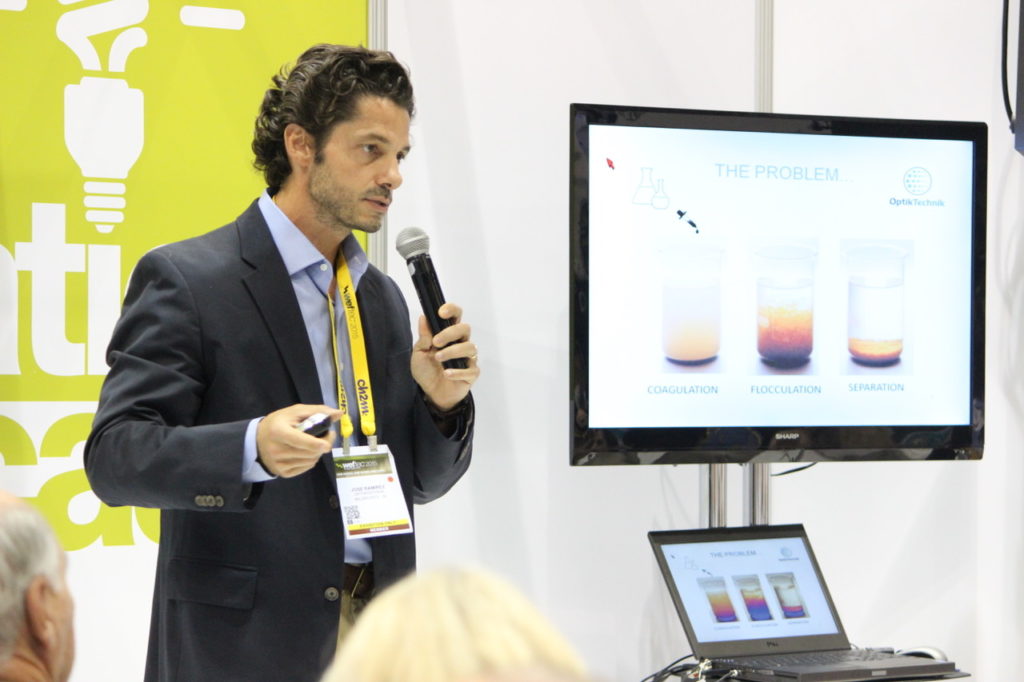Automating the ‘how’ in wastewater
OptikTechnik’s technology monitors moisture levels in sludge

By: Taylor Baseheart, Communications Manager for The Water Council
Have you ever wondered about the ‘how’ in treating wastewater? There are many variable factors that affect how facilities treat and disinfect waste especially for combined sewer treatment plants and industrial wastewater plants. Not only that, but minimizing energy costs also affect the ‘how’ and the use of automated procedures have proved to assist in lowering costs.
During treatment, porous belts are used to remove and disinfect water from the sludge. Wastewater treatment operators will manually monitor the sludge and apply water and chemicals accordingly. OptikTechnik has created a feedback control sensor that will monitor moisture levels in the sludge minimizing additional costs.
“We are very excited about the results of our pilot testing at Jones Island [wastewater treatment plant in Milwaukee] so far,” stated Jose Ramirez, co-founder and CEO of OptikTechnik. “Without the support from Veolia and Milwaukee Metropolitan Sewerage District (MMSD) we would not have been able to advance our idea from concept to reality. The credibility of working with such prestigious partners has also helped us garner attention from other prospective investors and strategic partners.”

Receiving funding from The Water Council’s Pilot Program through supporters Fund for Lake Michigan, MMSD, and Wells Fargo, OptikTechnik will move closer to commercialization of their technology.
OptikTechnik is getting ready to present the preliminary results of the pilot at Water Environment Federation’s Technical Exhibition & Conference (WEFTEC) in New Orleans this September. Todd Schwingle from Veolia will be presenting.
For more information on OptikTechnik, visit http://optik-technik.com/.
Read about OptikTechnik’s Business Development Success Story.
Pilot Program Partners